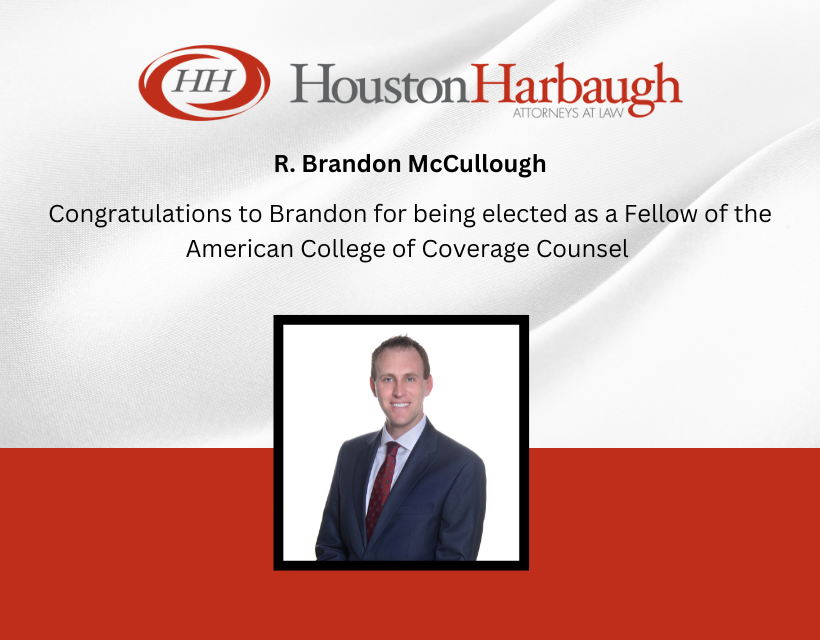PA Federal Business Decisions Volume 12, No. 1
Pennsylvania Federal Business Decisions
Bridget M. Gillespie and Henry M. Sneath, Business Decisions Editors [Originally published in the Spring 2007 edition of the Pennsylvania Bar Association’s Civil Litigation Update]
Court Finds Terms of Forbearance Agreement Are Unambiguous Regarding Lack of Obligation to Sell Back Shares of Stock
In The Winer Family Trust v. Queen, et al., 2006 U.S. App. LEXIS 31610 (3d Cir. Dec. 22, 2006), the Court was asked to decide whether the U.S. District Court for the Eastern District of Pennsylvania had correctly dismissed a cross-claim based upon its determination that the terms of a forbearance agreement were unambiguous and did not include an obligation to sell shares of stock. The Third Circuit concluded that the District Court had correctly interpreted the agreement.
Appellant and cross-claim plaintiff, Pennexx Foods, Inc., a provider of “case-ready” meat, entered into a stock purchase agreement with Smithfield Foods, Inc., a global producer and distributor of pork and processed meat products. Part of the stock agreement provided Pennexx with a revolving line of credit in exchange for a lien and certain security interests. Thereafter, Smithfield’s financial support permitted Pennexx to grow its business. However, Pennexx soon encountered financial problems and defaulted on its obligations to Smithfield. Consequently, Smithfield commenced legal proceedings to seize Pennexx’s property.
On May 29, 2003, Pennexx and Smithfield entered into a forbearance agreement. In the agreement, Pennexx agreed to pay its outstanding loan obligations by June 9, 2003 and provided Smithfield with a general release from all obligations and liabilities other than those set forth in the agreement. Pennexx failed to pay the loan obligation by the deadline, and Smithfield took control of Pennexx’s assets and operations, sold the assets and terminated Pennexx’s ability to continue operations.
The Winer Family Trust brought a shareholders’ suit against Pennexx and Smithfield. In this suit, Pennexx filed a cross-claim against Smithfield asserting fourteen claims based on the contention that Smithfield had breached the forbearance agreement by refusing to sell back its shares to Pennexx, which it intended to use them to enter into a joint venture with a prospective investor.
The Third Circuit examined the terms of the forbearance agreement and found that it contained no language obligating Smithfield to sell its shares. To the contrary, the only reference to the sale of shares actually prohibited Smithfield from selling or transferring any Pennexx common stock for 120 days.
The court explained that where a contract is clear and unequivocal, Pennsylvania law requires that its meaning be determined by its content alone. A contract is not ambiguous if the court can determine its meaning without any guide other than knowledge of the simple facts on which its meaning depends. Conversely, a contract is ambiguous if it is reasonably susceptible of different constructions and capable of being understood in more than one sense.
The court held that the terms of the forbearance agreement were unambiguous and that Smithfield was not obligated to sell back its Pennexx stock. Because there was no obligation to sell its shares, Smithfield did not breach the forbearance agreement, and no basis existed for any of the claims set forth in Pennexx’s cross-claims.
–Contributed by Kelly A. Williams, Esquire, Houston Harbaugh, Pittsburgh, PA; kwilliams@psmn.com
Competitor’s Hidden Use of Plaintiff’s Marks as Key Words to Appear in Google Search Results Does Not Constitute Trademark Infringement
In J.G. Wentworth v. Settlement Funding LLC, 2007 U.S. Dist. LEXIS 288 (E.D. Pa. Jan. 4, 2007), the court was faced with the issue of whether or not a defendant’s use of a competitor’s marks as internet “key words” to trigger the appearance of the defendant’s link in a Google search result violates the Lanham Act and common law trademark infringement. Under the facts of this case, the court found that such use did not cause the likelihood of confusion necessary for a trademark infringement claim.
J.G. Wentworth and Settlement Funding are finance companies that specialize in providing immediate cash payments in exchange for the rights to future payments from structured settlements and annuities. J.G. Wentworth regards itself as the undisputed leader in the structured settlement industry and contends that Settlement Funding is its next nearest competitor. Each of them maintains websites.
J.G. Wentworth filed claims for trademark infringement, false representation, trademark dilution and injury to business reputation in violation of sections 32(1) and 43(a) of the Lanham Act and claims under Pennsylvania common law trademark infringement and unfair competition. J.G. Wentworth’s claims arose from Settlement Funding’s use of J.G. Wentworth’s trademarks in two ways: (1) through Google’s AdWords program; and (2) in the “meta tags” for defendant’s website.
J.G. Wentworth alleges that these uses of its name ensures that a link to Settlement Funding’s website will appear in immediate proximity to links to J.G. Wentworth’s website when consumers conduct internet searches for “J.G. Wentworth” or “JG Wentworth.” Further, according to J.G. Wentworth, this is intended to confuse consumers and to divert potential consumers away from its website. This in turn allows Settlement Funding to steal its potential customers and allows it to erode the distinctiveness of its marks.
The court describes the Google “AdWords” program as a keyword-triggered advertising program that generates the “Sponsored Links” section on the search-results screen. J.G. Wentworth alleged that Settlement Funding infringes on its mark through Google’s AdWords program by using the terms “J.G. Wentworth” or “JG Wentworth” as its key words, so that an internet search for those terms produces a Sponsored Link to Settlement Funding’s website. The court noted, however, that the links to Settlement Funding’s website always appear as independent and distinct links on the search results page and that J.G. Wentworth was not contending that Settlement Funding’s advertisements or links incorporated J.G. Wentworth’s marks in any way.
Meta-tags work in a similar fashion to the AdWords program. Each website has “meta tags” or code which contain keywords used to describe the contents of a web page. Keyword meta tags are used by internet search engines, such as Google, to determine whether a particular web page is relevant to a search term entered by a user. Meta tags are invisible to Internet users. J.G. Wentworth contended that Settlement Funding uses J.G. Wentworth’s marks in its keyword meta tags, so that search engines include a link to Settlement Funding’s website when a user searches for J.G. Wentworth.
To establish its claims under the Lanham Act and Pennsylvania common law, J.G. Wentworth had to demonstrate: (1) its mark was valid and legally protectable; (2) it owned the mark; and (3) the defendant’s use of the mark to identify goods or services is likely to create confusion concerning the origin of the goods or services. Settlement Funding filed a motion to dismiss pursuant to Federal Rule of Civil Procedure 12(b)(6) on the basis that J.G. Wentworth could not meet the third element. The court agreed.
The court held that J.G. Wentworth could meet the “use in commerce” portion of the third element. Numerous cases from other circuits have held that there can be no liability under the Lanham Act absent the use of a trademark in a way that identifies the products and services being advertised by the defendant. Settlement Funding contended that its alleged uses in this case in no way identified the source of the goods and services. The court disagreed and held that Settlement Funding’s use of J.G. Wentworth’s marks to trigger internet advertisements for itself is the type of use that is protected by the Lanham Act which makes it a violation to use protected marks in commerce “in connection with the sale, offering for sale, distribution, or advertising of any goods or services,” or “in connection with any goods or services.”
However, the court also held that J.G. Wentworth could not show, as a matter of law, that Settlement Funding’s actions resulted in any actionable likelihood of confusion. A likelihood of confusion exists where “consumers viewing the mark would probably assume that the product or service it represents is associated with the source of a different product or service identified by a similar mark.”
J.G. Wentworth relied upon a specific type of confusion, “initial interest” confusion, to oppose the motion to dismiss. This confusion arises where a competitor lures potential customers away by initially passing off its goods as those of plaintiff’s even if the confusion as to the source of goods is dispelled by the time any sales are consummated.
J.G. Wentworth cited Brookfield Communications, Inc. v. West Coast Entertainment Corp., 174 3d Cir. 1036(9th Cir. 1999), to support its position that initial interest confusion applied. In Brookfield, the court held under similar facts that defendant’s use of plaintiff’s mark created initial interest confusion because an Internet “surfer” looking for plaintiff’s website who is taken by a search engine to defendant’s website will find a database similar enough such that a sizeable number of consumers who were originally looking for plaintiff’s product will simply decide to utilize defendant’s product.
Judge O’Neill disagreed with the Ninth Circuit’s reasoning stating that it is based upon a mischaracterization of the operation of an Internet search engine. Internet search engines do not take a consumer to a website due to a defendant’s use of a plaintiff’s marks in meta tags. Rather, a search engine takes a consumer to a link to defendant’s website. Because Settlement Funding’s links always appear as independent and distinct, the court held that potential consumers have no opportunity to confuse Settlement Funding’s services, goods, advertisements, links or websites for those of J.G. Wentworth. As a result, the court held that no initial interest protection applied, and it granted Settlement Funding’s motion to dismiss.
–Contributed by Kelly A. Williams, Esquire, Houston Harbaugh, Pittsburgh, PA; kwilliams@psmn.com
Failure To Investigate Prevents Use Of Discovery Rule To Toll Statute Of Limitations
In Harry Miller Corporation v. Mancuso Chemicals, Ltd., 2007 U.S. Dist. LEXIS 2123 (E.D. Pa. Jan. 7, 2007), the plaintiff, Harry Miller Corporation (“Miller”), brought suit against Mancuso Chemicals, Ltd. (“Mancuso”) for misappropriation of a trade secret, conspiracy, tortious interference, breach of contract and unjust enrichment.
Miller was a chemical company that manufactured and sold chemical products, including an acid inhibitor known as Activol 1803 (“Activol”) used in industrial steel processes. During the period from 1984 to 1990, Miller sold Activol to Dofasco Steel and Stelco Steel, two large Canadian steel companies. In December 1990, Paul Carr, a former employee of Miller set up a competing chemical company, Carr Chem, Inc. Miller contended that Carr stole the formula for Activol before leaving Miller and communicated the formula for Activol to Mancuso in 1991. Carr and Mancuso then began selling a competing acid inhibitor, which they called “Can-Hib.” Miller maintained that Can-Hib was identical to, or derived from, Activol. Shortly after Carr left Miller, both Dofasco and Stelco began purchasing Can-Hib directly from Carr and Mancuso.
Miller first learned that Dofasco was buying acid inhibitor from Carr in February 1991. In May of 1991, a Miller sales representative learned that Stelco was also buying acid inhibitor from Carr. Miller management was “alarmed” by the loss of the Dofasco and Stelco accounts, and by August 1991 had developed suspicions that Carr had stolen the formula for Activol. Miller made limited attempts to discover who was manufacturing Can-Hib for Carr, without success. Miller management later testified that they developed no serious strategy to investigate the origins of Can-Hib because they did not care where Carr’s product was coming from or who was making it. However, at some point prior to March 11, 1996, Miller did learn from Stelco that Mancuso was the manufacturer of Can-Hib.
In 1997, Miller brought suit directly against Carr and Carr Chem for misappropriation of a trade secret. Mancuso was not named as a defendant in the litigation against Carr. In the Carr litigation, Paul Carr initially stated that he had purchased the formula for Can-Hib from a man in the chemical industry named Gary Young. Carr later testified that Mancuso, not Carr, had purchased the formula, but Carr did not know whether Mancuso had ever paid for the formula. As a result of the suit, in 1999 Miller and Carr entered into a settlement agreement in which Carr and Carr Chem assigned all of their rights in Can-Hib to Miller.
After the settlement with Carr, Miller contacted Mancuso and demanded that it stop selling Can-Hib, as Carr had assigned all rights in the product to Miller. Mancuso responded that it, not Carr, was the owner of the rights to Can-Hib and therefore, Carr could not have assigned any such rights to Miller. Mancuso subsequently changed the name of the product to “Man-Hib” and continued to manufacture and sell it. The current lawsuit followed.
Miller filed suit against Mancuso in the District Court for the Eastern District of Pennsylvania. Mancuso subsequently filed seven separate motions for summary judgment challenging every count of Miller’s complaint on the basis of the statutes of limitations for the various claims, laches and on the merits of each individual claim.
The court dismissed the tortious interference and breach of contract counts on the merits and dismissed the unjust enrichment count on the basis of the statute of limitations. With respect to the misappropriation and conspiracy counts, the court limited Miller’s potential claims based on the statute of limitations. The court noted that the statute of limitations for misappropriation was two years. The court rejected Miller’s assertion of the discovery rule, holding that Miller’s failure to even attempt to find out about Mancuso’s manufacture of Can-Hib prevented it from asserting the discovery rule. The court noted that the identity and role of Mancuso could have been discovered by Miller, if it had undertaken a reasonable investigation. The court likewise rejected Miller’s assertion of fraudulent concealment to toll the statute of limitations, holding that it did not apply because Mancuso never communicated directly with Miller or took any affirmative steps to mislead Miller.
However, the court did not dismiss Miller’s misappropriation count completely. The court noted that misappropriation was considered a continuing tort under Pennsylvania law. Therefore, every new instance of misappropriation by Mancuso gave rise to a new two-year statute of limitations. As Mancuso was still manufacturing Can-Hib (newly renamed as Man-Hib), the court held that Miller’s claim for misappropriation was limited to the time period extending forward from the date two years prior to Miller’s filing of suit against Mancuso.
–Contributed by Stephen S. Photopoulos, Esquire, Houston Harbaugh, Pittsburgh, PA
Permanent Injunction Ordered And Attorneys’ Fees Awarded Where Defendants’ Actions In Trademark Infringement Suit Rose To The Level Of “Bad Faith.”
In A-1 Mortgage Corporation v. Day One Mortgage, LLC, et. al., 2007 U.S. Dist. LEXIS 81 (W.D. Pa. Jan. 3, 2007), the District Court for the Western District of Pennsylvania granted a plaintiff’s motion for summary judgment in its suit to protect its distinctive mark. Plaintiff A-1 Mortgage Corporation (“A-1”), a mortgage broker and financial services provider, sought a permanent injunction against Day One Mortgage (“Day One”) and other defendants under the Lanham Act, 15 U.S.C. § 1125(a), which “protects qualified federally unregistered trademarks from infringement, provided that interstate commerce is involved.” Id. at *13.
A-1 was the exclusive owner of the “A-1 Mortgage” trademark, which was registered with the Commonwealth of Pennsylvania, but not federally registered. A-1 had also conducted its business under the trade names “A-1,” “A-1 Mortgage,” and “A-1 Mortgage of Cranberry” since April of 1996. Id. at *2. Defendant Zur Goldblum (“Goldblum”) had been an independent contractor/employee of A-1 Mortgage. Id.at *4. On February 8, 2005, a civil judgment was entered against A-1 and in favor of one of its customers on the ground that Goldblum had admitted to falsifying that customer’s loan documents, which resulted in the rejection of her mortgage application. Goldblum therefore knew that A-1 would soon terminate his employment. Id. at *5. The Court found that in anticipation of his termination from A-1, Goldblum had copied and removed confidential customer information and records. Id. at *6.
On or about April 15, 2005, Goldblum registered the name “Day One Mortgage LLC” with the State of Pennsylvania, and proceeded to operate his business under that name. Through its summary judgment motion, A-1 presented evidence Goldblum had contacted A-1 customers using the illegally procured information upon his departure from A-1; that he had authorized “sound-alike” radio advertisements; that he had represented to Day One customers that the two businesses were the same and/or related to one another; that Day One had reaped profits from customer confusion at A-1’s expense; and that Goldblum ignored a cease and desist letter sent to Goldblum by counsel for A-1. Id. at *7-10. Defendants did not file a response to A-1’s summary judgment motion, therefore the Court accepted the facts set forth therein as uncontroverted.
In order to set forth a trademark claim under the Lanham Act, A-1 had to show that (1) its marks were valid and legally protectable; (2) it owned the marks; and (3) Defendants’ use of the marks to identify goods or services likely created confusion concerning the origin of the goods or services. Id. at *14 (citingCheckpoint Systems, Inc. v. Checkpoint Software Technologies, Inc., 269 F.3d 270 (3d Cir. 2001);Opticians Association of America v. Independent Opticians of America, 920 F.2d 187 (3d Cir. 1990)). Furthermore, where the mark is not federally registered and has not achieved “incontestability,” the validity and legal protectability of the mark depends upon proof of secondary meaning, unless the mark is “inherently distinctive.” Ford Motor Co. v. Summit Motor Products, 930 F.2d 277, 291 (3d Cir. 1991) (citations omitted in original). Secondary meaning may be shown by, inter alia, sales and advertising leading to buyer association; length of use; exclusivity of use; customer surveys and actual confusion. Id.at *15 (internal citations omitted). Inherently distinctive marks qualify for protection even though not federally registered, and fall into four categories: (1) generic; (2) descriptive; (3) suggestive; and (4) arbitrary or fanciful. Id. at *15 (internal citations omitted).
In this case, the Court held that “because there is no logical or suggested relationship to its product, the mark ‘A-1’ qualifies as an arbitrary or suggestive mark, or at a minimum, it qualifies as a descriptive mark.”Id. at *16. The Court further found that A-1 had presented sufficient evidence to find that its marks had acquired secondary meaning, and were therefore protectable marks. The Court also held that A-1 owned its marks, and, after applying the factors set forth in Interpace Corp. v. Lapp, Inc., 721 F.2d 460, 463 (3d Cir. 1983), to determine likelihood of confusion,1 held that those factors weighed heavily in A-1’s favor, and against Defendants.
The Court held that A-1 met its burden of proof on the merits of its trademark claim, granted A-1’s request for permanent injunctive relief, ordered Defendants to pay gross profits to A-1, and further found that Defendant Goldblum had acted with bad faith, making this an “exceptional” case under the Lanham Act, such that the Court was authorized under Section 1117(a) of the Act to award attorneys’ fees of $61,383.71. Id. at *24.
– – Contributed by Shannon M. Clougherty, Esquire, Houston Harbaugh, Pittsburgh, PA
(1) the degree of similarity between the owner’s mark and the alleged infringing mark; (2) the strength of the owner’s mark; (3) the price of the goods and other factors indicative of the care and attention expected of consumers when making a purchase; (4) the length of time the defendant has used the mark without evidence of actual confusion; (5) the intent of the defendant in adopting the mark; (6) the evidence of actual confusion; (7) whether the goods, thought not competing, are marketed through the same channels of trade and advertised through the same media; (8) the extent to which the targets of the parties’ sales efforts are the same; (9) the relationship of the goods in the minds of consumers because of the similarity of functions; and (10) other factors suggesting that the consuming public might expect the prior owner to manufacture a product in the defendant’s market or that he is likely to expand into that market.








